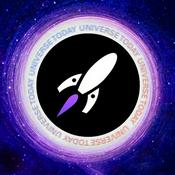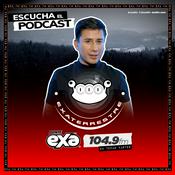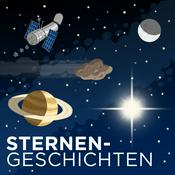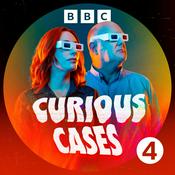1088 episodios
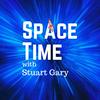
Stellar Ballet: Apep's Cosmic Dance and Titan's Liquid Mystery
22/12/2025 | 26 min
SpaceTime with Stuart Gary Gary - Series 28 Episode 150In this episode of SpaceTime, we delve into intriguing discoveries and ongoing challenges in the realm of astrophysics and planetary science.Cosmic Dance of Dying StarsAstronomers have made fascinating observations of a unique star system named Apep, located over 8,000 light years away in the constellation Norma. This rare system consists of three massive stars locked in a 190-year orbit, creating stunning spirals of cosmic dust. Using the advanced capabilities of NASA's Webb Space Telescope and the Very Large Telescope in Chile, researchers captured extraordinary images revealing four distinct dust shells spiraling outward from the stars. Lead author Ryan White from Macquarie University discusses how these findings enhance our understanding of stellar interactions and the evolution of massive stars over time.Titan's Liquid Ocean: A New PerspectiveA recent study challenges the long-held belief that Saturn's largest moon, Titan, harbors a vast underground ocean. Instead, researchers suggest that Titan may have a more complex internal structure characterized by slushy tunnels and pockets of meltwater rather than a global liquid water ocean. This revelation, based on a reanalysis of data from NASA's Cassini mission, could have significant implications for the search for potential life on Titan, indicating that any existing life forms might inhabit a more confined environment with concentrated nutrients.NASA's MAVEN: Communication ChallengesMission managers at NASA are working diligently to restore contact with the Mars Atmosphere and Volatile Evolution (MAVEN) spacecraft, which went silent during a routine pass behind Mars on December 6. Engineers are analyzing data from before the loss of signal to identify the cause and determine if the spacecraft can be salvaged. MAVEN has been crucial for studying Mars' atmosphere and has served as a vital communications relay for surface missions.www.spacetimewithstuartgary.com✍️ Episode ReferencesAstrophysical JournalNatureNASA TVBecome a supporter of this podcast: https://www.spreaker.com/podcast/spacetime-your-guide-to-space-astronomy--2458531/support.(00:00:00) This is space time series 28 episode 150 for broadcast on 22nd December 2025(00:00:47) NASA's Webb Space Telescope reveals four spectacular dust shells from distant star system(00:10:58) New study says Titan probably doesn't have a vast underground liquid water ocean(00:15:57) NASA mission managers continue efforts to restore contact with missing maven spacecraft(00:18:36) New study finds shared genetic patterns across 14 common psychiatric disorders(00:20:56) A new study claims acupuncture treatment for lower back pain reduces pain

Cosmic Milestones: The Earliest Supernova and Martian Water Mysteries
19/12/2025 | 19 min
In this episode of SpaceTime, we uncover groundbreaking discoveries and exciting celestial events that illuminate our understanding of the universe.Earliest Supernova Ever DetectedAstronomers have achieved a remarkable milestone by detecting the earliest supernova ever observed, dating back to a mere 730 million years after the Big Bang. Using the powerful Webb Space Telescope, this supernova, cataloged as GRB250314A, emitted a gamma ray burst that has shattered previous distance records. Lead author Andrew Levin shares insights into how this discovery provides a glimpse into the universe when it was only 5% of its current age, revealing surprising similarities with modern supernovae despite the vast differences in their epochs.Liquid Water on Mars: New EvidenceNew seismic data from NASA's Mars InSight lander suggests that liquid water could still exist beneath the Martian surface, potentially providing a habitat for microbial life. The analysis of marsquakes has revealed boundaries in the Martian crust that indicate the presence of water-filled cracks, offering compelling evidence that life may persist on the Red Planet. We discuss the implications of these findings and the methodologies used to analyze the Martian subsurface.The Great Geminids Meteor Shower of 2025The annual Geminid meteor shower is reaching its peak, presenting stargazers with the chance to witness up to 100 meteors per hour under optimal conditions. Unlike many meteor showers that originate from comets, the Geminids are unique as they come from the asteroid 3200 Phaethon. Dr. Robert Massey provides tips on how to best observe this spectacular celestial event, emphasizing the importance of dark skies and the naked eye for optimal viewing.www.spacetimewithstuartgary.com✍️ Episode ReferencesAstronomy and AstrophysicsBritish Medical JournalNature CommunicationsBecome a supporter of this podcast: https://www.spreaker.com/podcast/spacetime-your-guide-to-space-astronomy--2458531/support.(00:00:00) New clues suggest that liquid water could still exist on Mars today(00:00:48) Astronomers have detected the earliest supernova ever seen using the Webb Space Telescope(00:05:10) New study based on seismic data suggests liquid water may still exist on Mars(00:09:12) The Geminids are visible between now and December 20th(00:13:10) New study finds coffee may slow down biological aging of people with mental illnesses

Gamma Ray Revolution: The Longest Burst and Cosmic Mysteries Unveiled
17/12/2025 | 27 min
SpaceTime with Stuart Gary Gary - Series 28 Episode 147In this episode of SpaceTime, we delve into remarkable discoveries that significantly enhance our understanding of the cosmos.Longest Gamma Ray Burst Ever DetectedAstronomers have made headlines with the discovery of the longest gamma ray burst ever recorded, GRB 250702B, which lasted over seven hours. This unprecedented event is reshaping our understanding of stellar explosions and their aftermath. Initial observations indicate that this extraordinary burst may have originated from a black hole consuming a star, prompting new theories about the mechanisms behind these powerful cosmic phenomena. We explore the implications of this finding and how it challenges existing models of gamma ray bursts.Elemental Bounty in Supernova RemnantFor the first time, scientists have detected chlorine and potassium in the remnants of the supernova Cassiopeia A, utilizing the advanced capabilities of the CRISM spacecraft. This discovery sheds light on the elemental processes that occur during stellar explosions and their connection to the formation of elements crucial for life on Earth. We discuss the significance of these findings and their impact on our understanding of stellar nucleosynthesis.International Space Station Fully OccupiedIn a historic first, the International Space Station has reached full capacity, with all eight of its docking ports in use. We discuss the implications of this milestone, including the logistics of managing multiple spacecraft and the ongoing missions currently underway aboard the ISS.www.spacetimewithstuartgary.com✍️ Episode ReferencesMonthly Notices of the Royal Astronomical SocietyAstrophysical Journal LettersNature AstronomyBecome a supporter of this podcast: https://www.spreaker.com/podcast/spacetime-your-guide-to-space-astronomy--2458531/support.(00:00:00) This is space Time Series 28, Episode 147 full broadcast on 17 December 2025(00:00:47) Astronomers have detected the longest gamma ray burst ever detected(00:11:11) Astronomers have detected chlorine and potassium in a supernova remnant(00:18:27) International Space Station is fully occupied with all eight docking ports now in use(00:20:05) New study claims flavonoids may help improve insulin resistance(00:24:58) You're a multiple award winner. You've won in creative writing and controversy(00:26:05) Space Time is available every Monday, Wednesday and Friday through bitesz. com

MAVEN's Silence: Unravelling the Mystery of Mars' Lost Contact
16/12/2025 | 27 min
In this episode of SpaceTime, we explore significant developments in space exploration and cosmic studies that could reshape our understanding of the universe.Nasa's MAVEN Mars Orbiter: Communication LossNASA's MAVEN (Mars Atmosphere and Volatile Evolution) spacecraft has gone silent, with contact lost on December 6th after passing behind Mars. The orbiter has been a vital asset for over a decade, studying the Martian atmosphere and solar wind interactions that have transformed Mars from a water-rich world to a cold desert. We delve into MAVEN's critical findings, including the mechanisms of atmospheric escape and the implications of its potential loss for ongoing Martian research.Galactic Neighbourhoods: Influencing EvolutionA new study reveals how a galaxy's local environment can significantly affect its evolution. The research, published in the Monthly Notices of the Royal Astronomical Society, demonstrates that galaxies situated in densely populated regions tend to grow more slowly and develop different structures compared to their isolated counterparts. By analysing data from the Deep Extragalactic Visible Legacy Survey, astronomers have gained insights into the complex dynamics of galactic interactions and their impact on star formation rates.Uranus and Neptune: More Richie than Icy?Challenging long-held classifications, a recent study suggests that the solar system's ice giants, Uranus and Neptune, may actually be more rocky than icy. Researchers from the University of Zurich conducted computer simulations that indicate a broader range of internal compositions for these planets, which could explain their complex magnetic fields. This new perspective could alter our understanding of planetary formation and evolution, paving the way for future explorations of these distant worlds.www.spacetimewithstuartgary.com✍️ Episode ReferencesMonthly Notices of the Royal Astronomical SocietyNASA TVBecome a supporter of this podcast: https://www.spreaker.com/podcast/spacetime-your-guide-to-space-astronomy--2458531/support.

Uranus Unveiled: Decoding the Mystery of Radiation Belts and Martian River Systems
13/12/2025 | 21 min
In this episode of SpaceTime, we tackle some of the most intriguing cosmic mysteries and discoveries that could reshape our understanding of the universe.Unraveling Uranus: The Mystery of Its Radiation BeltsFor 39 years, the intense electron radiation belts surrounding Uranus have puzzled scientists since NASA's Voyager 2 flyby in 1986 revealed unexpectedly high levels of radiation. New analyses suggest these findings may be explained by a solar wind structure interacting with the Uranian system during Voyager 2's visit. This research opens up new questions about the fundamental physics governing these extreme energy levels and the unique characteristics of Uranus itself.Mapping Martian River Systems: A Historic FirstA groundbreaking study has mapped ancient river systems on Mars, identifying 16 large drainage basins that could have supported life billions of years ago. By synthesizing previous data on Martian river valleys, lakes, and canyons, scientists have outlined how these systems could have formed a global network, similar to Earth's most biodiverse river basins. This research enhances our understanding of Mars' geological history and its potential for past life.2026 Australasian Sky Guide ReleasedThe 2026 Australasian Sky Guide has officially been released, offering skywatchers a detailed monthly map of celestial events. Highlights include supermoons, planetary alignments, and eclipses, providing an exciting year ahead for astronomy enthusiasts. Dr. Nick Glom shares insights into the guide's features and the astronomical events to look forward to in the coming year.www.spacetimewithstuartgary.com✍️ Episode ReferencesProceedings of the National Academy of SciencesCommunications Earth and EnvironmentBecome a supporter of this podcast: https://www.spreaker.com/podcast/spacetime-your-guide-to-space-astronomy--2458531/support.(00:00:00) Scientists may have finally resolved 39 year old mystery about Uranus radiation belts(00:03:55) A new study has begun the task of mapping ancient river systems on Mars(00:08:06) The 2026 Australasian Sky Guide has just been released(00:10:23) The book tells readers what's up in the sky for each month(00:11:39) Total eclipse of the moon in March is spectacular and easy to photograph(00:14:22) A new study suggests volcanic activity may have paved the way for the Black Death(00:15:37) A new study claims people who want children are more likely to find older faces attractive(00:17:33) Tim Mendham warns about the dangers of taking medical advice on social media(00:20:08) Spacetime is available through bitesz.com and other podcasting platforms
Más podcasts de Ciencias
Podcasts a la moda de Ciencias
Acerca de SpaceTime with Stuart Gary
Escucha SpaceTime with Stuart Gary, Espacio en blanco y muchos más podcasts de todo el mundo con la aplicación de radio.net

Descarga la app gratuita: radio.net
- Añadir radios y podcasts a favoritos
- Transmisión por Wi-Fi y Bluetooth
- Carplay & Android Auto compatible
- Muchas otras funciones de la app
Descarga la app gratuita: radio.net
- Añadir radios y podcasts a favoritos
- Transmisión por Wi-Fi y Bluetooth
- Carplay & Android Auto compatible
- Muchas otras funciones de la app


SpaceTime with Stuart Gary
Descarga la app,
Escucha.



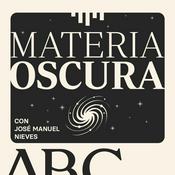








![Podcast Размышления физика о [не]реальности](https://mx.radio.net/podcast-images/175/razmyshleniia-fizika-o-ne-real-nosti.png?version=9b0df7c5b6715f2a3dabb563b750c0c6eaa79b50)



